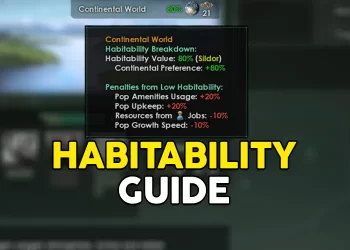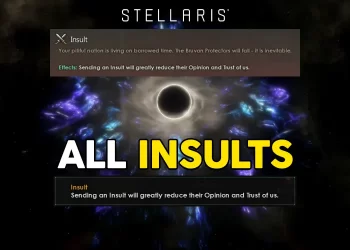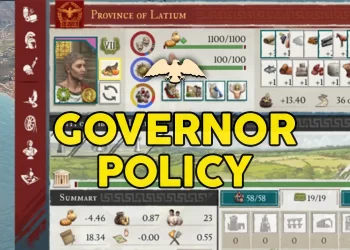You’re now reading the top 10 Stellaris pro tips from a player (me) with over +2000 hours. This is not about discovering Americas; however, you might learn some new tips and tricks you might have overlooked before. A new perspective is always helpful in these matters. I don’t claim to be a pro though, it’s a manner of speaking.
STELLARIS PRECURSORS TIER LIST
Stellaris is one of the most advanced 4x strategy games ever. Thus, it requires lots of micro-managing, calculating, and knowledge to play in harder difficulties. It has a very steep learning curve. I think that’s why every bit of tip and trick can make a huge difference in the grand scheme of things.
Don’t get me wrong, you can enjoy Stellaris without min-maxing on normal difficulties. But higher difficulties and 25x crisis strength will require you to utilize every bit of advantage you can in order to be victorious.
10 Stellaris pro-tips & guides:
1. Hire Curator Order & Artisan Troupe


Always look for The Artisan Troupe and the Curators in Stellaris. Finding these two in the galaxy is one of the most important tasks of early game because the bonuses you get from the two are insane.
Curator order bonuses:
- +10% research speed for 10 years. 1000 to 5000 energy credits. (Always renewable.) ***
- Recruit level 5 giga scientist for regular civs. (Amazing for Curator Archivist council position.) Fundamental principles for AI / Hive mind empires. (+15% research speed.) ***
- +25% bonus damage against leviathans such as Tiyanki Matriarch, Eldritch Horror, Automated Dreadnought, Scavenger Bot, Ether Drake, etc. *
- Establish Think Tank. (Not really important at this stage of the game.)
Artisan Troupe bonuses:
- +10% monthly unity for 10 years. 1000 to 5000 energy credits. (Always renewable.) ***
- +15% happiness and +10% pop growth speed for 10 years. 1000 credits. (Amazing for organic species.) ***
- Exhibit Art Monument decision +15% Amenities +50 Immigration Pull. (Meh.)
- Found Art College. (Very little bonus, outdated feature.)
Explore with your science ships and military fleets to find these two space guilds. You can also make a trade deal with AI empires, asking them for their communications. AI empires will share the location of guilds if they’ve found them.
If you have not luck with either of those, try building Sentry Array ASAP because it’ll give you the vision on entire galaxy.
2. Dealing With Merchant Guilds
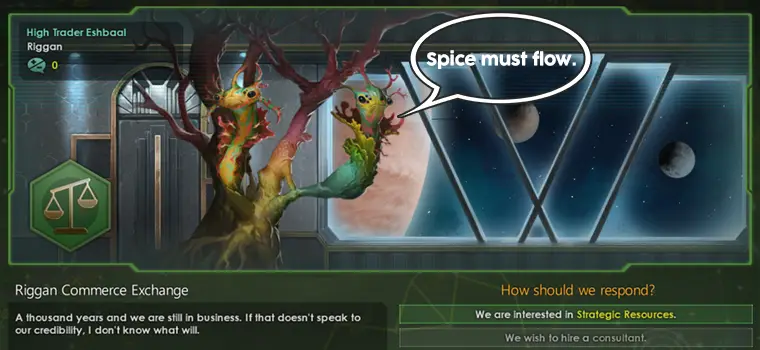

Strategic resources are really important in mid to late game phases. Especially if you’re unable to research ancient refinery in time.
You can always buy strategic resources from galactic market, but the prices will inflate over time if you buy too much.
That’s when the guild come in handy. They always ask for a flat 10 energy credit per one unit of strategic resources. Besides you can ask for level 5 official renowned paragon after hitting +50 relation with a merchant guild.
Stellaris trader enclaves:
- XuraCorp: 1 to 5 monthly exotic gasses, 10 energy per unit.
- Muutagan Merchant Guild: 1 to 5 rare crystals, 10 energy per unit.
- Riggan Commerce Exchange: 1 to 5 volatile motes, 10 energy per unit.
One trader enclave always appears in every game. The other two may or may not depending on your luck and galaxy size.
3. Specialize and Ascend Planets
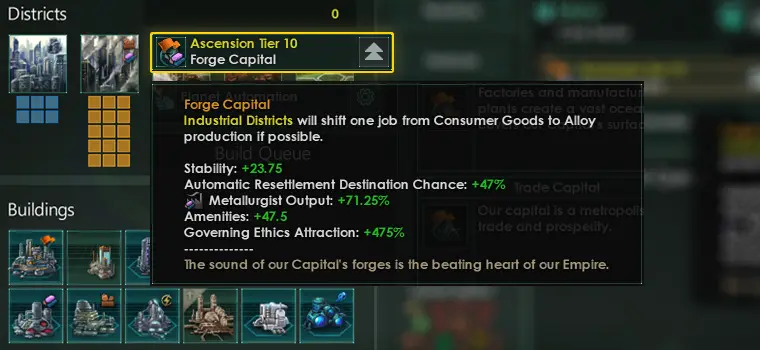

Focusing planets on the production of a single resource will yield the most output.
Let’s imagine a scenario where you find a 20-size planet. It can have max 12 mining, 6 energy, 5 industrial, and 4 agricultural districts. You better specialize it into a mining world and build only mining districts. Mining world designation will give flat +25% miner resource output. You can also build 6 energy districts on the same planet, but their output will be -25% lower compared to a generator world. That’s why it’s best to find a world where you can build many energy districts and turn it into a generator world. This strategy is best for production and empire-size reduction because districts increase empire size.
Now let’s talk about ascending planets. Planetary ascension can be done by using lots of unity. Therefore, I don’t recommend planetary ascension before unlocking all traditions. Because tradition adaption costs increase over time with empire size, you’ll need to rush them to save unity points. Then you can ascend planets all the way. Check out my Stellaris unity guide to dig deeper.
Ascending planets will increase planetary designation bonuses. Meaning, that flat +25% resource output can go way over +70%. It’ll also reduce the empire size effect of the ascended planet.
Having few specialized and ascended planets is a game changer. That’s why I try to build ring worlds and move my pops to ring segments ASAP.
4. Always Transfer Excess Pops
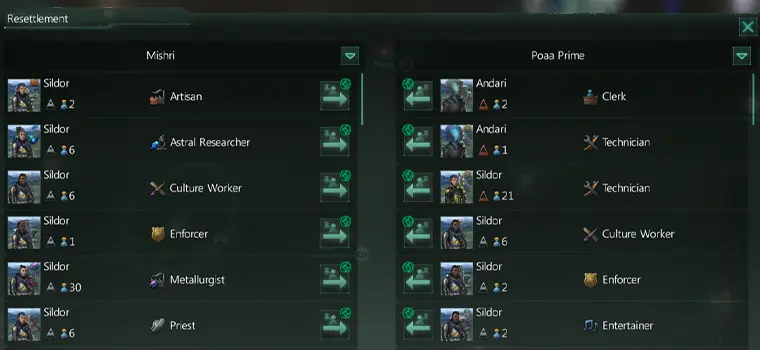

Got a mining world with max amount of mining districts? That’s very good. Now you must resettle all the excess pops to another planet to work.
There is no point of having clerk pops when they can be working as alloy worker on another planet. That’s also valid for excess amenity pops. Always resettle amenity pops as long as you have at least +1 available amenities.
Resettle unemployed pops as well unless you’re going to build more districts or buildings for them to work.
Resettling pop cost is nothing compared to the work they can get done on a different planet.
5. Manage Your Empire Size
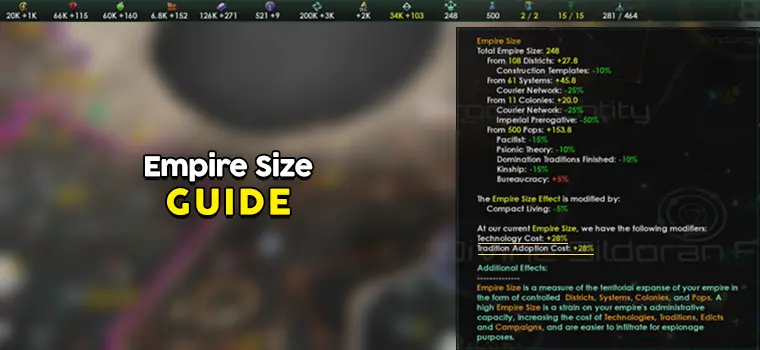

Every Stellaris player wants to expand their empire, conquer the stars, and colonize every possible world. But the empire size is the terrible sword of Damocles. Empire size can be crippling if you go way overboard.
Going over empire size penalties:
- Technology cost increase.
- Tradition adaptation cost increase.
- Edict cost increase.
- Extended campaign run times.
- Espionage vulnerability.
You should always choose traditions with empire size reduction. Also remember to ascend planets to reduce empire size. It’ll help with technology cost a lot.
6. Rush Traditions
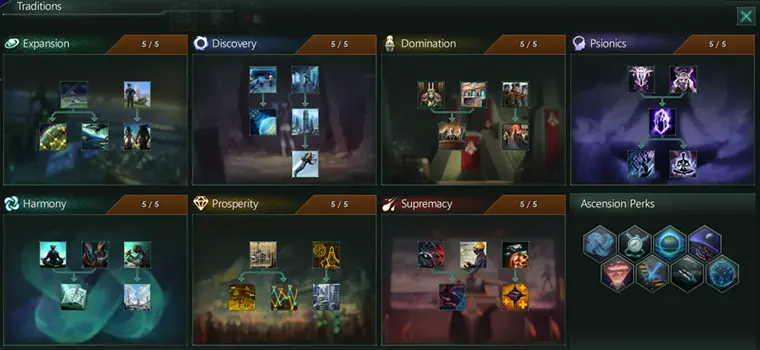

There are 16 total traditions you can choose but the tradition limit is 7 for empires each run.
Traditions are very powerful, and they cost unity. That’s why I like having a planet focused only on unity production very early in the game.
Traditions can be rushed fairly early if you specialize a planet for unity, manage empire size, and don’t spend unity on leaders except scientists.
Your empire size will grow with the time and empire size hugely affect tradition costs. It’s best to rush traditions before unity costs start getting out of hand.
7. Hire Marauders Leaders
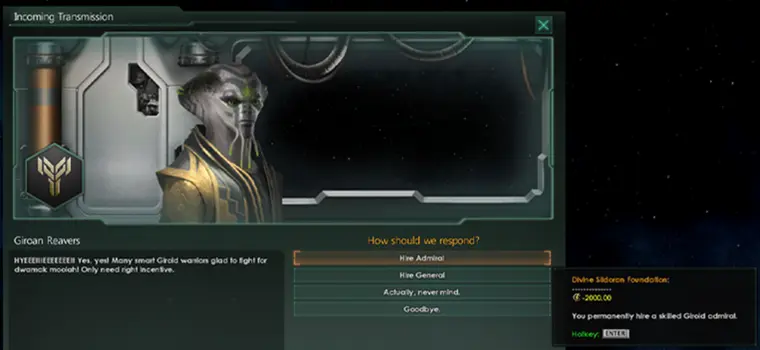

You can have psychic leaders, synth leaders, virtual leaders, or legendary paragons. Yet, none of them can match with a marauder leader in a naval combat.
A marauder leader will cost -2000 energy credits to recruit. It might be a lot in the early game but it’s nothing in the mid-late game. They’re the most powerful military leaders and definitely worth hiring.
Marauder leaders come with unique mercenary warrior trait and two other random traits. They’re hired at level 3.
Stellaris mercenary warrior leader trait:
- Evasion: +10%
- Ship fire rate: +10%
- Army damage: +10%
8. Control Chokepoints & Borders
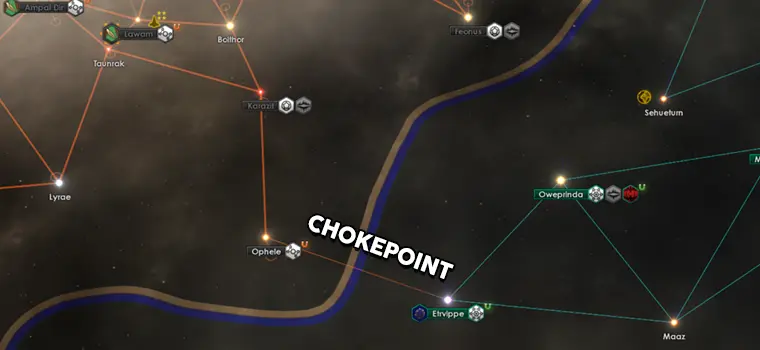

Controlling chokepoints in Stellaris is very important. Remember the movie 300? The Battle of Thermopylae was about defending a narrow corridor successfully against superior forces.
If you secure a chokepoint and build your defenses there, AI can never pose a threat to you.
Also don’t forget closing your borders to neighboring AI empires. If you don’t their construction ships will move over your borders and take over unowned star systems.
9. Explore With Military Ships


Did you know that you could explore systems with military ships? A military ship with leader can explore unknown star systems and reveal connected hyperplanes. It’s a valid strategy for discovering chokepoints. Very important in the early game.
Exploring and surveying are two different things. Only science ships can survey.
Why waste your precious science ships on exploring when you can use military ships? Science ships should survey towards chokepoints whereas military ships explore the map.
It’s one of those so-called pro-tips I’ve learned after playing +1000 hours unfortunately…
10. Postpone Analyzing Anomalies
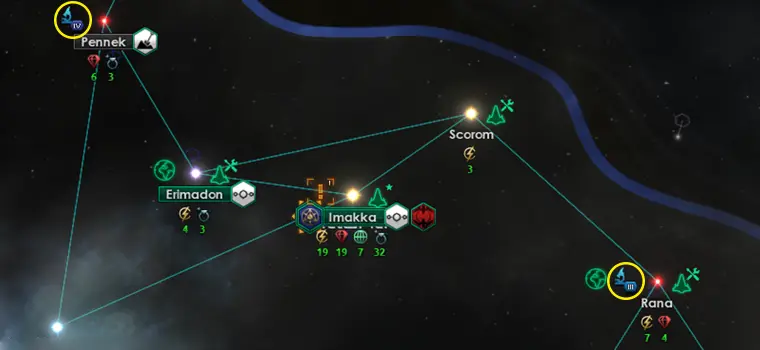

Anomalies are great, they can help you discover new resources and research station sites. You should discover all of them, but not at the early game.
You can only field 3 or 4 scientists at the beginning. These scientists must survey starts to find chokepoints and borders as soon possible. Once you discover chokepoints and natural borders, you’re free to analyze every anomaly you want.
Same goes for excavation sites too. You should survey the chokepoints and borders first. Then you can go back inwards to take care of anomalies, excavation sites, and astral rifts.
If you take your sweet time on analyzing anomalies, AI empires will expand their empires and control chokepoints.
It’s all about priorities.
Did I miss anything? Do you know a hidden gem knowledge, trick, or a pro tip you want to share? Feel free to use comment section below. Your contribution is highly appreciated.



